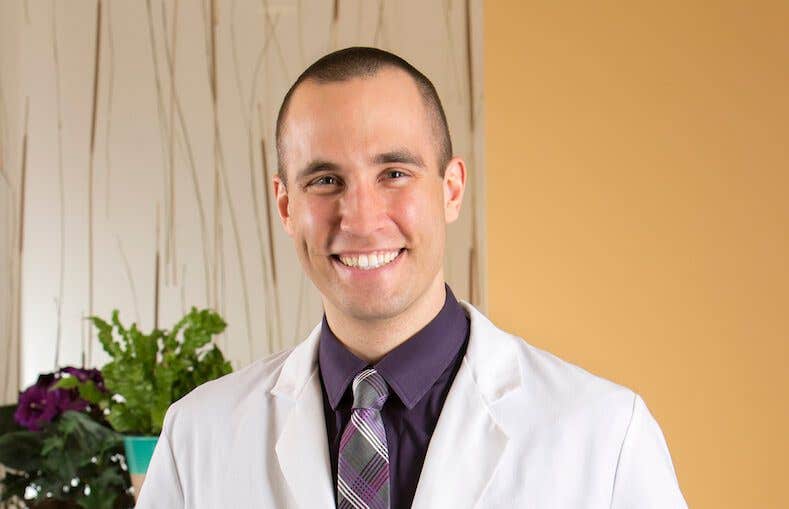Have you ever tried something, invested nearly everything you had—time, energy, and resources—into a project, and failed? What would happen if you fell short every time? Chances are you would quit. The goal wouldn’t seem realistic.
Tammy, a 33-year-old woman, walked into my office on a Tuesday afternoon in November. She had recently been diagnosed with prediabetes, a condition where blood sugar exceeds a normal range, and after 10 years of trying to adopt a plant-based diet, and failing every time, she needed help. Tammy’s previous doctor told her to check back in every six months so she could monitor her status. The Centers for Disease Control and Prevention predict that up to 1 in 3 patients with prediabetes will develop type 2 diabetes within five years. If left untreated, this condition can result in blindness, kidney failure, nerve damage, heart disease, and stroke. That’s why Tammy made the appointment. She wanted a prescription to treat both the symptoms and root cause of diabetes.
My approach is to prescribe medications, if necessary, but to encourage patients to experiment with a dietary intervention, one rich in greens, whole grains, and beans. A plant-based vegan diet, which gets most of its calories from whole plant foods, reduces the risk of type 2 diabetes by 62 percent, according to the Academy of Nutrition and Dietetics. The best part about this prescription is that it treats insulin resistance, the root cause of type 2 diabetes. By opting for plant-based foods, like leafy green salads with ancient grains, fresh fruit, and beans, our bodies pull excess fat from our cells. This approach boosts insulin function, which can restore A1C levels to a healthy range, and prevents diabetes symptoms, such as excessive thirst, fatigue, extreme hunger, tingling in the feet and toes, dry skin, and vision damage.
During my initial meeting with Tammy, I learned that although she understands the prescription and has read the research, she needs help putting it into practice. She tried, week after week, year after year. Her barrier wasn’t knowledge, but distancing herself from what she calls the “bad foods,” the sugary foods, the processed junk foods—the foods that set her up to fail. After a few days of healthful eating, Tammy would return to the diabetes culprits, foods rich in sugar, fat, and salt. She became frustrated. She longed for a clean bill of health. She kept trying.
While Tammy was one of the 86 million adults with prediabetes, she was one of the lucky ones. She received a formal diagnosis and understands the risks. She is also one of an estimated 4 million adults who struggle with compulsive overeating disorder. The condition affects three women for every two men and often starts in early adulthood for women and in midlife for men.
Tammy is open about her challenges and wants her clinicians to understand them. She mentions there are two types of people we likely see: people who need to learn how to eat a healthful diet and people who know what to do, but need help putting it into practice. By recognizing her problem and seeking treatment, in the form of a 12-step program and a 12-week nutrition class, Tammy got the help she needed.
She listened to the nutrition advice—increase her intake of fiber to 40 grams a day; favor leafy green vegetables; limit fat intake to 30 grams a day, opt for smaller portions of avocados and nuts; and avoid problem foods, including ice cream, pizza, and cake—and she followed it. Within four months, Tammy had lost 40 pounds, her size 18 clothes, her prediabetes status, and a decade of weight-loss frustration. She’s now planning for the future.
Tammy and her husband will start a family soon and hope to pass down a legacy of health. Her refrigerator wears a “Path to Heart Disease” flyer, which shows that the early forms of atherosclerosis, the hardening of the arteries, may start in utero. This graphic is her daily motivation to make healthful food choices. Her future children are counting on it.
This journey made me reflect on my days in medical school and throughout my residency in the hospital, where we didn’t spend as much time thinking about human needs or emotions as we did learning about disease states, symptoms, and treatments. We were too busy learning about the physiology and anatomy of the human body. We peered into the carotid arteries of patients, but it was easy to look past the heart. The same holds true today. We know a Western-style diet is a problem, but there are so many others, like the opioid epidemic, the threat of displaced access to affordable health care, and infectious diseases lurking in the plumbing of our sterile exam rooms.
I’m not a dietitian by training, nor do I aspire to be, but I read the studies, I believe in well-done research, and I am encouraged by the results. In Tammy’s case, we spend 10 minutes each visit talking about dietary challenges, healthful food swaps, her overall lifestyle, and one other thing I’d like to see her incorporate: exercise. While this is a goal we’re working toward, Tammy lost weight and reversed her prediabetes status solely with a dietary intervention, coupled, of course, with support from a 12-step program, where she learned about cravings, environmental triggers, and how to build safe food zones. It’s a coordinated system of accountability and support.
“This isn’t a lifestyle choice, but a life-or-death choice,” Tammy mentioned in our most recent visit. “The most important decision I make every day is what I put in my body. It’s an investment in myself, in my family, and in my future.”
I smiled. I couldn’t say it better myself.
Related News
Get Our Best Price On The Forks Meal Planner

Forks Meal Planner takes the guess work out of making nutritious meals the whole family will enjoy.
Master Plant-Based Cooking!

Our new course features over 100 lessons, 50+ recipes, downloadable guides, and more!




